China has a rich and fascinating history spanning thousands of years. From ancient dynasties to modern revolutions, China’s history is an integral part of its culture and identity. For those interested in exploring China’s past, here are the top 10 historic sites to visit:
1.The Great Wall of China
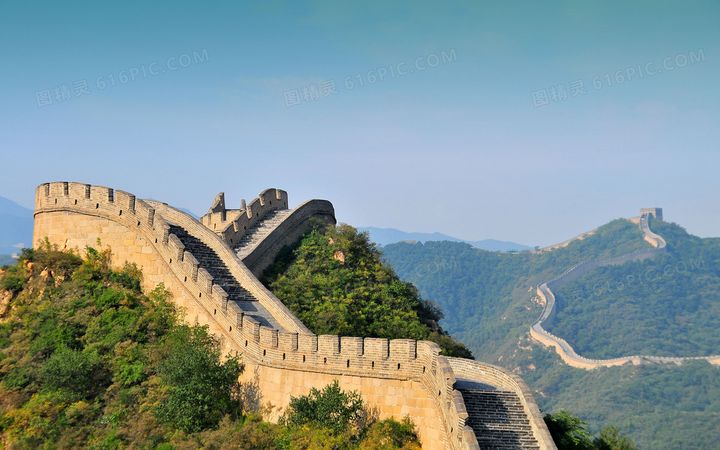
The Great Wall was originally built over 2,000 years ago, during the Warring States period in China, as a means of defending against invading armies from the north. Construction continued through various dynasties, including the Qin, Han, and Ming dynasties, with each adding their own sections to the wall.
The Great Wall is not a continuous wall, but rather a series of fortifications and barriers made up of brick, tamped earth, and stone. The wall ranges in height from 15 to 30 feet, and is up to 25 feet wide in some areas. Along the wall are watchtowers, barracks, and signal towers used for communication and defense purposes.
In addition to its defensive capabilities, the Great Wall also served as a symbol of China’s strength and unity. It was a source of national pride and identity, and became an important cultural and historical landmark.
Today, the Great Wall is a major tourist attraction in China, attracting millions of visitors every year. Some of the most popular sections of the wall include the restored sections near Beijing, such as Badaling and Mutianyu, as well as the wild and rugged sections in the Gansu and Xinjiang provinces.
Despite its popularity, the Great Wall is also a subject of controversy due to its impact on the environment and cultural heritage. Many sections of the wall have been damaged or destroyed due to erosion, weather, and human activity. Additionally, some parts of the wall have been rebuilt using modern materials, which has drawn criticism from those who argue that it detracts from the wall’s historical and cultural significance.
Overall, the Great Wall of China remains a symbol of China’s rich history and cultural heritage. Whether you visit for its stunning vistas, its historical significance, or both, the Great Wall is a must-see attraction for anyone traveling to China.
2.The Forbidden City
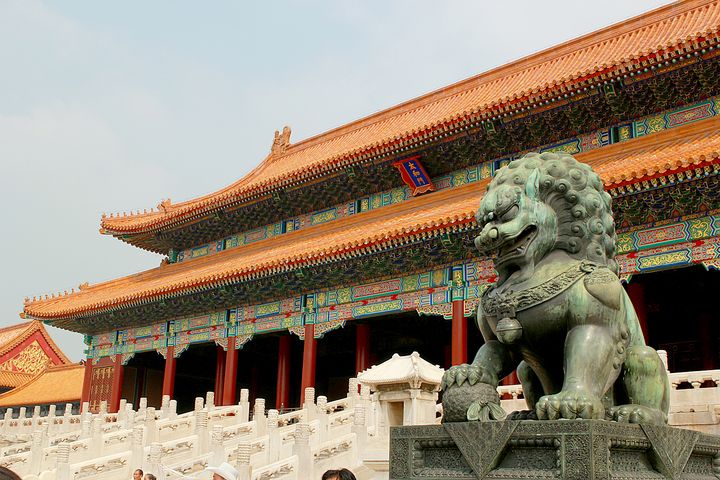
Construction on the Forbidden City began in 1406 during the Ming dynasty, and it was completed 14 years later. The palace complex is made up of over 980 buildings and covers an area of 72 hectares, making it one of the largest palace complexes in the world.
The Forbidden City was so named because it was off-limits to the general public for centuries. Only the emperor, his family, and his closest advisors were allowed inside the palace walls. The complex was divided into two main sections: the Outer Court, where the emperor held court and conducted official business, and the Inner Court, where the emperor and his family lived.
The Forbidden City is renowned for its intricate architecture, colorful decorations, and beautiful gardens. The palace complex features a number of iconic structures, including the Hall of Supreme Harmony, the Hall of Central Harmony, and the Hall of Preserving Harmony. These buildings were used for important state ceremonies and were considered the most sacred spaces within the palace.
Today, the Forbidden City is open to the public as a museum, and it is one of the most popular tourist destinations in China. Visitors can explore the palace complex and learn about China’s rich history and culture. The palace is also home to numerous artifacts and treasures, including imperial thrones, jade carvings, and ancient paintings.
Overall, the Forbidden City is a must-see attraction for anyone traveling to Beijing or China. It is a testament to the country’s rich cultural heritage and a reminder of China’s imperial past.
3.The Terracotta Warriors
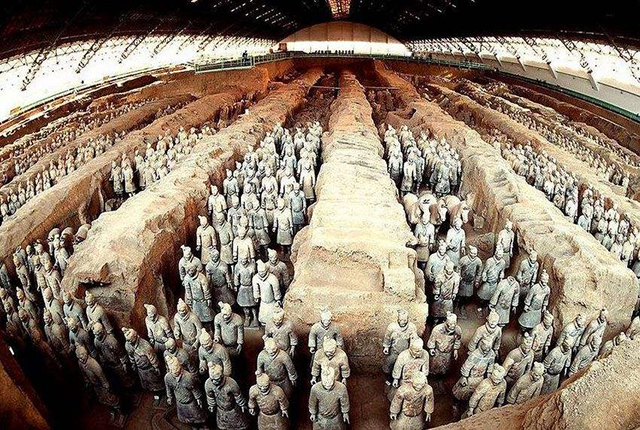 The Terracotta Warriors are one of the most impressive archaeological finds in the world. Discovered in 1974 by local farmers in Xi’an, China, the Terracotta Warriors are a collection of life-size terracotta sculptures of soldiers, horses, and chariots that were buried with the first Emperor of China, Qin Shi Huang, in the 3rd century BCE.
The Terracotta Warriors are one of the most impressive archaeological finds in the world. Discovered in 1974 by local farmers in Xi’an, China, the Terracotta Warriors are a collection of life-size terracotta sculptures of soldiers, horses, and chariots that were buried with the first Emperor of China, Qin Shi Huang, in the 3rd century BCE.
The Terracotta Warriors were created to guard Qin Shi Huang’s tomb and protect him in the afterlife. The army consists of over 8,000 life-size soldiers, horses, and chariots, each with its own unique facial features, armor, and weapons. The army is divided into three main pits, with the largest pit containing the majority of the soldiers.
The discovery of the Terracotta Warriors has provided an incredible insight into ancient Chinese military culture and technology. The warriors were designed to be realistic representations of the soldiers of the time, and they are believed to have been created by a team of skilled craftsmen and artists.
Today, the Terracotta Warriors are a major tourist attraction in China, and visitors from all over the world come to see these incredible sculptures. The site has been carefully excavated and preserved, and visitors can see the warriors up close and learn about their history and significance.
In addition to the warriors themselves, the Terracotta Warriors site also includes a museum, which displays a number of artifacts related to the Qin Dynasty, including weapons, jewelry, and pottery. Visitors can also see a 360-degree film that tells the story of the Terracotta Warriors and their discovery.
Overall, the Terracotta Warriors are a testament to China’s rich cultural heritage and a reminder of the country’s ancient history. The site is a must-see attraction for anyone interested in archaeology, ancient history, or Chinese culture.
4.The Summer Palace
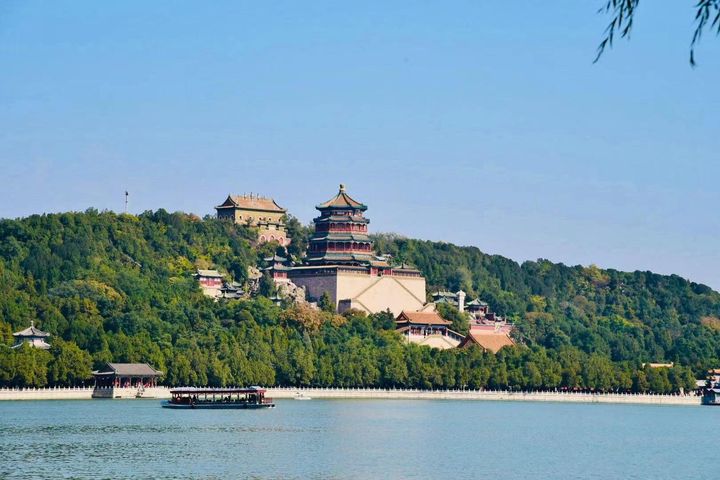
The Summer Palace is situated on a hillside overlooking Kunming Lake, and it is known for its stunning architecture, beautiful gardens, and serene atmosphere. The palace complex covers an area of over 700 acres and is home to a number of iconic structures, including the Hall of Benevolence and Longevity, the Tower of Buddhist Incense, and the Marble Boat.
One of the main features of the Summer Palace is its beautiful gardens, which were designed to reflect the harmony and balance of nature. The gardens are filled with a variety of trees, flowers, and other plants, and they feature a number of pavilions, bridges, and other architectural elements.
Another highlight of the Summer Palace is its boating and fishing facilities. Visitors can rent paddle boats and enjoy a leisurely cruise on Kunming Lake, or they can try their hand at fishing in the lake’s clear waters.
The Summer Palace is also home to a number of cultural and historical exhibits, including a museum that showcases the history of the palace and its many inhabitants. Visitors can learn about the architecture, art, and culture of ancient China, and gain a deeper appreciation for the country’s rich history and heritage.
Overall, the Summer Palace is a must-see attraction for anyone visiting Beijing or China. Its beautiful gardens, stunning architecture, and rich history make it a truly unique and unforgettable experience.
5.The Temple of Heaven
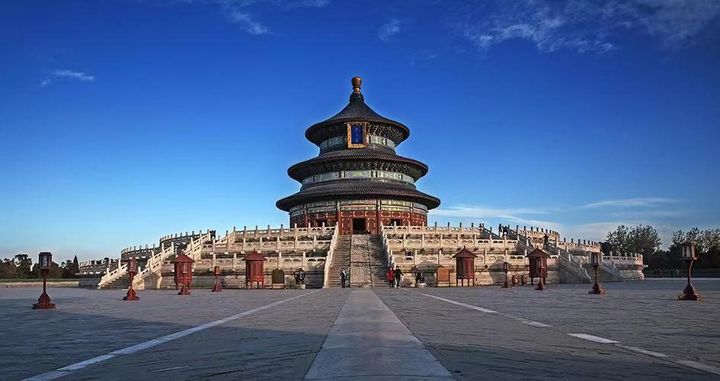
The Temple of Heaven is an architectural marvel, with a number of stunning buildings and structures set amidst beautiful gardens and parkland. The most famous building at the site is the Hall of Prayer for Good Harvests, which is an impressive circular structure built entirely out of wood, without the use of a single nail. The building is topped with a magnificent blue-tiled roof that symbolizes heaven.
The temple complex is also home to a number of other impressive structures, including the Imperial Vault of Heaven and the Circular Mound Altar. The Imperial Vault of Heaven is a beautiful cylindrical building that houses a number of religious artifacts, while the Circular Mound Altar is a raised platform that was used for offering sacrifices to heaven.
The Temple of Heaven is surrounded by a beautiful park that covers an area of over 2,700 acres. The park features a number of scenic walking trails, gardens, and pavilions, making it the perfect place to relax and take in the beauty of the site.
The Temple of Heaven is a UNESCO World Heritage Site, and it is one of the most popular tourist attractions in Beijing. Visitors can take guided tours of the site, learn about its rich history and significance, and marvel at the incredible architecture and beauty of the temple complex.
Overall, the Temple of Heaven is a must-see attraction for anyone visiting Beijing or China. Its rich history, stunning architecture, and beautiful parkland make it a unique and unforgettable experience.
6.The Mogao Caves
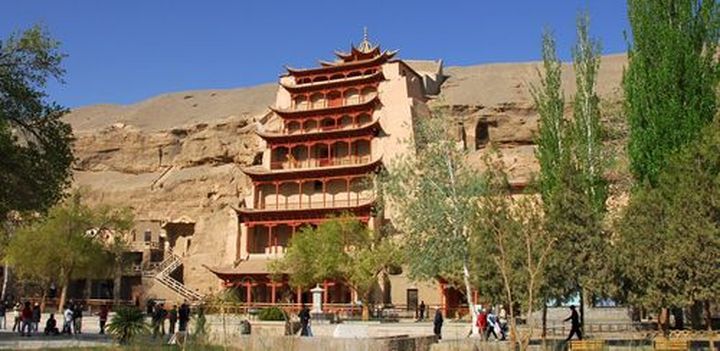
The Mogao Caves were carved into the side of a cliff along the ancient Silk Road, which was an important trade route connecting China with the West. The caves were used as a place of worship and pilgrimage, and they are filled with beautiful statues, frescoes, and murals depicting Buddhist teachings and legends.
In total, there are 492 caves at the site, which span a distance of 1.6 kilometers. The caves vary in size and complexity, from small, simple shrines to large, multi-chambered halls filled with intricate carvings and artwork.
One of the most impressive caves at the site is Cave 16, also known as the Library Cave. This cave contains thousands of ancient Buddhist manuscripts and artifacts, many of which are over 1,000 years old. The manuscripts were discovered by a group of explorers in the early 20th century and are now housed in museums around the world.
The Mogao Caves are a UNESCO World Heritage Site, and they are widely considered to be one of the most important cultural treasures in China. Visitors can take guided tours of the site, learn about the history and significance of the caves, and marvel at the incredible artwork and architecture on display.
Overall, the Mogao Caves are a must-see attraction for anyone interested in history, art, or religion. Their rich history, stunning artwork, and importance to the ancient Silk Road make them a truly unique and unforgettable experience.
7.The Potala Palace
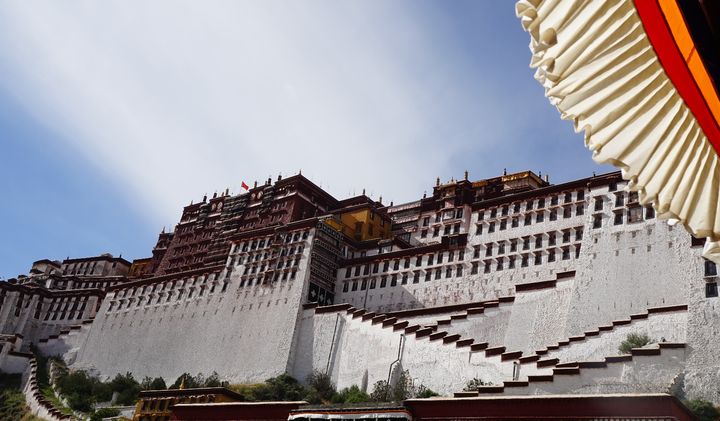
The Potala Palace is a towering fortress-like structure that rises over 13 stories high and contains over 1,000 rooms. The palace is divided into two main sections, the White Palace and the Red Palace. The White Palace is the administrative center of the palace, while the Red Palace contains a number of important religious and ceremonial halls.
The palace is adorned with intricate artwork, including murals, carvings, and sculptures. One of the most impressive parts of the palace is the Great West Hall, which features a massive golden statue of the Buddha, as well as murals and carvings depicting Buddhist teachings and legends.
The Potala Palace is also home to a number of important relics and artifacts, including the tombs of several past Dalai Lamas. Visitors can see these tombs, as well as a number of other important religious and cultural treasures.
The palace is surrounded by a beautiful park, which offers stunning views of the surrounding mountains and city. Visitors can take guided tours of the palace, learn about its rich history and cultural significance, and explore the beautiful parkland surrounding it.
The Potala Palace is a UNESCO World Heritage Site, and it is widely considered to be one of the most important cultural treasures in Tibet and China. Its rich history, stunning architecture, and importance to Tibetan Buddhism make it a unique and unforgettable experience for visitors.
8.The Ancient City of Pingyao
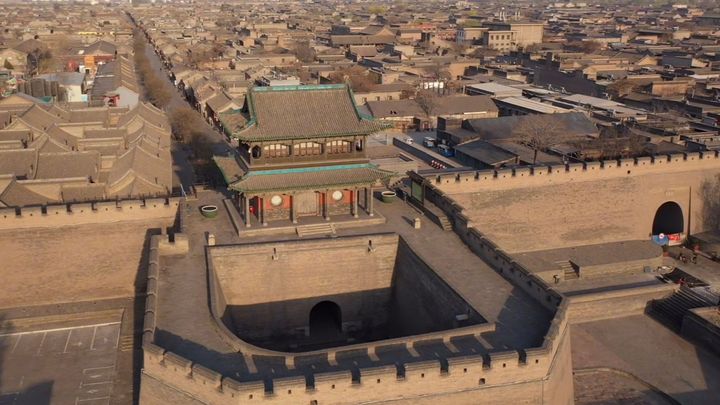
The city is surrounded by a massive wall, which was built in the 14th century to protect it from invaders. The wall is over six kilometers long, and it contains six gates and 72 watchtowers. The city itself is a maze of narrow streets and alleyways, lined with traditional Chinese buildings, temples, and shops.
One of the most impressive buildings in the city is the Rishengchang Exchange Shop, which was the first draft bank in China. The shop played an important role in the economic development of the city and helped to establish Pingyao as a major financial center.
Visitors to the Ancient City of Pingyao can take guided tours of the city, visit the various museums and historic sites, and explore the bustling marketplaces and shops. The city is also known for its delicious food, including traditional Shanxi noodles and local snacks.
The Ancient City of Pingyao is a UNESCO World Heritage Site, and it is widely considered to be one of the best-preserved examples of a traditional Chinese city. Its rich history, stunning architecture, and cultural significance make it a must-see destination for anyone interested in Chinese history and culture.
9.The Leshan Giant Buddha
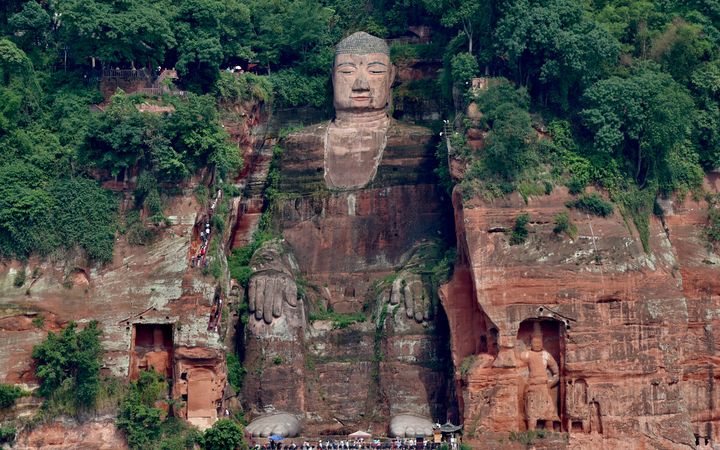
The statue stands at over 70 meters tall and depicts a seated Buddha with his hands resting on his knees. The statue is so large that its head alone is over 14 meters tall. The statue is surrounded by a beautiful park, which offers stunning views of the surrounding mountains and rivers.
The Leshan Giant Buddha is a popular tourist attraction and a significant religious site for Buddhists. Visitors can climb up the cliff face to see the statue up close and explore the various temples and pagodas that surround it. There is also a boat ride available that takes visitors around the base of the statue, offering a unique perspective on its size and grandeur.
In addition to its cultural and religious significance, the Leshan Giant Buddha is also a testament to the engineering prowess of the Tang Dynasty. The statue was built using advanced techniques and materials, and it has withstood earthquakes, floods, and other natural disasters for over a thousand years.
The Leshan Giant Buddha is a UNESCO World Heritage Site, and it is widely considered to be one of the most impressive and awe-inspiring cultural treasures in China. Its massive size, stunning location, and rich history make it a must-see destination for anyone visiting Sichuan Province.
10.The Shaolin Temple
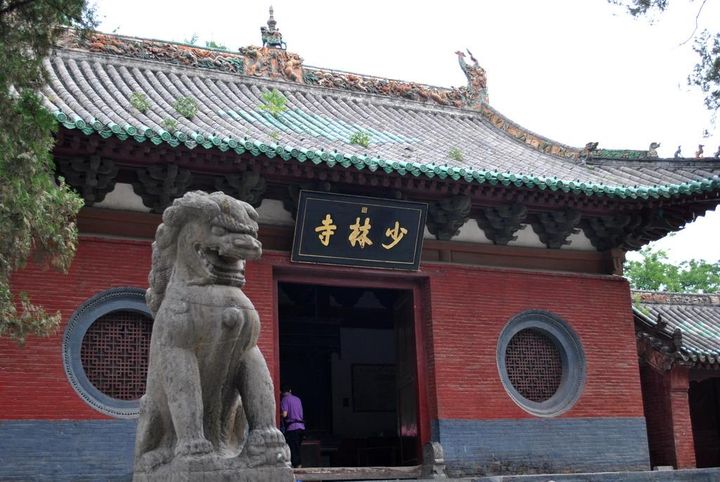
The temple was founded over 1,500 years ago during the Northern Wei Dynasty and has since played an important role in Chinese culture and history. It is home to numerous temples, pagodas, and other historic buildings, including the Hall of Heavenly Kings, the Mahavira Hall, and the Pagoda Forest.
One of the most famous aspects of the Shaolin Temple is the martial arts practiced by its monks. The Shaolin martial arts are a combination of kung fu, qigong, and meditation, and they are known for their physical strength, agility, and spiritual discipline. Visitors can watch performances by the Shaolin monks, take part in martial arts classes, and learn more about the history and philosophy behind these ancient practices.
The Shaolin Temple is also a significant religious site for Buddhists. The temple is home to many important relics and artifacts, including a famous stone tablet inscribed by Emperor Kangxi of the Qing Dynasty, which recognizes the temple as the birthplace of Chan Buddhism in China.
In addition to its cultural and religious significance, the Shaolin Temple has also been recognized as a UNESCO World Heritage Site, a testament to its importance and influence on Chinese culture and history.
Visitors to the Shaolin Temple can take guided tours, watch martial arts performances, attend lectures on Buddhism and martial arts, and explore the beautiful surrounding natural landscape. It is a must-see destination for anyone interested in Chinese culture, history, and martial arts.
In conclusion, China is home to numerous historic sites that offer a glimpse into its rich and diverse history. Whether you’re interested in ancient dynasties, religious sites, or natural wonders, there is something for everyone in China’s many historic sites. These top 10 historic sites are a great place to start your exploration of China’s past and present.
Some other notable historic sites in China include the Temple of Confucius in Qufu, the birthplace of Confucius and a UNESCO World Heritage Site; the Huaqing Hot Springs in Xi’an, a former imperial bathing complex; and the Longmen Grottoes in Luoyang, a collection of over 100,000 Buddhist statues and carvings.
Visiting these historic sites in China is a great way to gain a deeper understanding and appreciation for the country’s culture and history. It’s important to note that many of these sites can be quite crowded, especially during peak tourist seasons, so it’s recommended to plan ahead and book tickets in advance if possible. Additionally, many sites require a fair amount of walking or climbing stairs, so be prepared with comfortable shoes and appropriate clothing.
Overall, exploring China’s historic sites is an incredible way to immerse yourself in the country’s rich and fascinating past. From the Great Wall to the Terracotta Warriors, these sites offer a unique perspective on the world’s oldest continuous civilization.